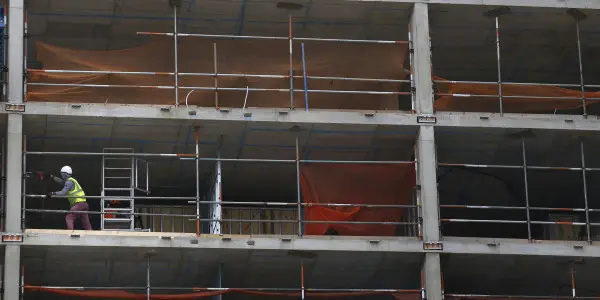Construction activity and new orders rose sharply last month, despite signs of a slowdown in growth, the latest figures show.
There was also a boost in the number of jobs being created in the sector, according to the U lster Bank Construction Purchasing Managers’ Index (PMI) – a seasonally adjusted survey which tracks changes.
Simon Barry, chief economist, Republic of Ireland at Ulster Bank, said: “The latest Ulster Bank Construction PMI signalled ongoing growth of construction activity in Ireland during May with the headline index remaining well above the 50 mark at 55.9.
“Although the rate of expansion eased slightly, it was still marked and above the pre-downturn average.
“A slowdown from the record rate of expansion seen in February was probably inevitable but it would be reassuring to see some stabilisation in the growth rate in the coming months.”
Activity has risen for the past 33 consecutive months, although the rate of expansion eased to the slowest since November last year.
The greatest acceleration was on commercial construction projects over the month.
Housing activity also increased sharply but civil engineering recorded only a slight rise, the slowest in a nine-month sequence of growth.
New business was up for the 35th month in a row and there were reports that previously on hold projects were being progressed.
Meanwhile, the rate of job creation quickened slightly in May as firms responded to higher new orders by taking on more staff.
The research also found cost inflation had gathered momentum due to higher bills for fuel and raw materials.
Mr Barry added: “Looking beyond the headline figure, weaker expansions were also seen with regards to housing activity and new orders, while business confidence dipped.
“On the other hand, there were positive signs from a faster rise in commercial activity, while construction firms were in a position to up their rate of job creation slightly. To sum up, the overall picture is one of solid improvements, albeit with less spectacular rates of growth than were seen in the first quarter of the year.”
